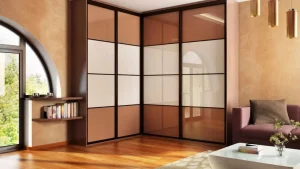A beautifully designed bedroom isn’t just about aesthetics—it’s about balance, comfort, and smart space utilization. Whether you’re furnishing a spacious master suite or a compact urban studio, choosing the right furniture plays a pivotal role in shaping your bedroom’s visual harmony and functionality. For those with limited square footage, integrating space-saving sleeping options can instantly elevate both form and function. In this article, we’ll explore how to pick bedroom furniture that compliments your space, style, and daily lifestyle.
1.Start with Room Dimensions and Layout
Before heading to a showroom or scrolling through online catalogs, take accurate measurements of your bedroom. Consider not just floor space, but ceiling height, window placement, and door swing as well. A detailed floor plan helps identify the zones for sleeping, dressing, and storage, allowing you to make informed decisions when choosing furniture pieces.
Key Tip:
Use painter’s tape to map out furniture dimensions on your floor. This helps you visualize how each item fits without crowding the space.
2.Identify Your Aesthetic Theme
From Scandinavian minimalism to boho chic, every bedroom benefits from a consistent visual theme. Identifying your preferred style early can guide your furniture choices, color palette, and textures.
Common Aesthetic Styles:
- Minimalist: Clean lines, neutral colors, and unembellished forms.
- Modern Farmhouse: Wood finishes, soft textiles, and vintage accents.
- Industrial: Metal elements, rustic textures, and open-frame furniture.
- Contemporary: Sleek surfaces, bold accents, and functional elegance.
Your furniture should be a visual extension of your style. For example, if you favor modern aesthetics, opt for low-profile beds with sleek headboards and concealed storage.
3.Choose Furniture with Purpose and Proportion
Oversized furniture may look impressive in the showroom but can overwhelm a modest bedroom. Proportion is key to maintaining visual harmony.
Bed Selection:
Your bed is the centerpiece of the bedroom. Choose a size that suits your sleeping habits without overpowering the room. If you’re working with tight quarters, consider:
- Platform beds with built-in drawers
- Wall-mounted or fold-down beds
- Loft beds (especially in studio or children’s rooms)
These choices offer stylish and space-saving sleeping options that enhance mobility and open up floor area.
Storage Solutions:
Instead of bulky dressers, opt for multifunctional furniture:
- Beds with under-bed storage
- Ottomans that double as storage chests
- Nightstands with drawers or shelves
Seating:
If your room allows, a compact bench at the foot of the bed or a sleek accent chair in a corner can boost both style and practicality.
4.Pay Attention to Color and Material
Color and material impact how large or cozy your bedroom feels. Light colors tend to make a room feel airy and spacious, while dark tones add depth and drama.
Materials to Consider:
- Wood: Adds warmth and works with most styles.
- Metal: Sleek and contemporary; great for industrial themes.
- Upholstered: Adds softness and luxury, especially in beds and chairs.
- Glass and Acrylic: Create the illusion of space and reduce visual clutter.
Try to keep consistency in your finishes—mismatched woods or clashing metal tones can disrupt the room’s visual flow.
5.Don’t Overlook Vertical Space
When floor space is limited, think vertically. Tall dressers, wall-mounted shelves, and floating nightstands provide storage without eating into your floor plan.
Vertical Furniture Ideas:
- Floor-to-ceiling wardrobes or armoires
- Wall-mounted desks or vanities
- Tall shelving units with decor and books
By keeping storage off the floor, you free up room for movement and preserve a clean, uncluttered aesthetic.
6.Use Mirrors and Lighting to Enhance Space
Strategic use of mirrors can dramatically alter the perception of space in your bedroom. Large wall mirrors or mirrored wardrobe doors reflect light and make the room appear larger.
Lighting Tips:
- Layer your lighting: use a mix of overhead lights, task lamps, and ambient sources.
- Consider wall sconces to free up space on nightstands.
- Choose lighting fixtures that complement your furniture’s style.
Well-lit rooms always feel more inviting and balanced, making your furniture choices shine even more.
7.Balance Functionality with Visual Appeal
While it’s easy to fall in love with a trendy piece, make sure every item you choose serves a purpose. Avoid cluttering your room with furniture that looks good but serves no real function.
Ask yourself:
- Do I really need a second dresser?
- Can I mount my TV instead of placing it on a console?
- Will this piece make my bedroom more or less functional?
Maintaining a clean and purposeful space is at the heart of maximizing bedroom aesthetics.
8.Customize When Necessary
If standard furniture doesn’t quite fit your needs, consider custom-built options. Custom wardrobes, floating shelves, or built-in desks can make the most of awkward spaces, sloped ceilings, or unusual layouts.
While custom solutions may be pricier, they offer long-term value and personalization that store-bought furniture often can’t match.
Final Thoughts
Choosing bedroom furniture that fits both your space and style doesn’t need to be a challenge. By focusing on scale, purpose, and cohesion, you can create a room that feels both beautiful and functional. From space-saving sleeping options to multi-functional accent pieces, every furniture decision should align with your overall aesthetic and the practical needs of your lifestyle.
Your bedroom should be a sanctuary—a place that reflects your personality, promotes rest, and brings visual delight. With a thoughtful approach to furniture selection, you can transform any space into an oasis of comfort and elegance.






